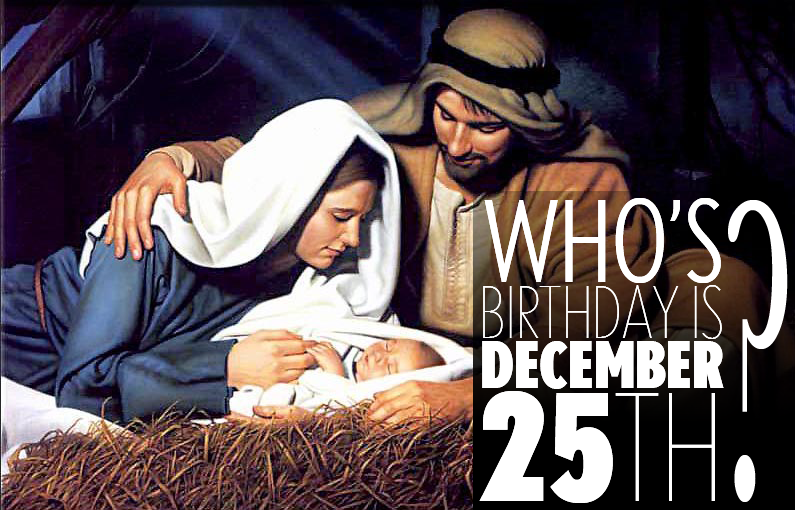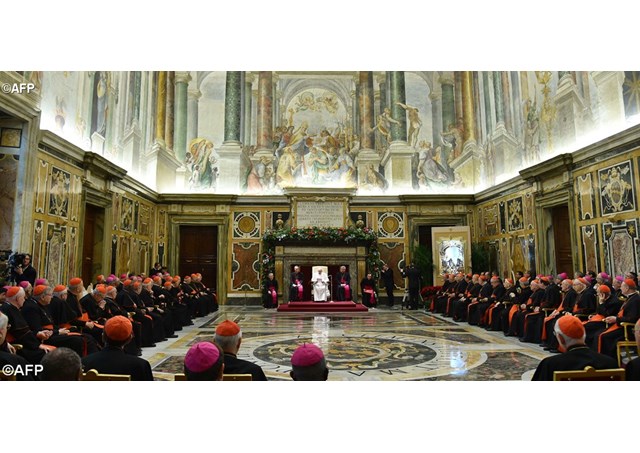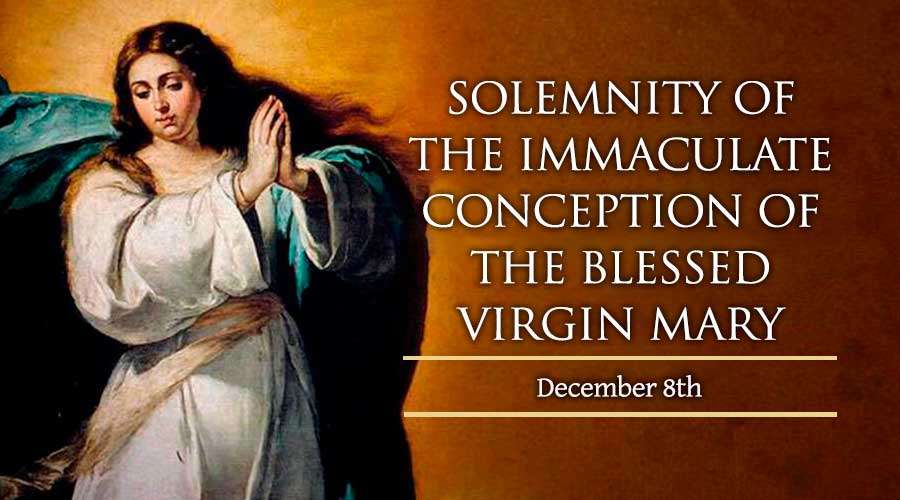
by Jon Sorensen
It’s that time of year again when many Christians encounter claims that pagan deities predating Jesus Christ were born on December 25. In popular films, Internet videos, and other media you can find long lists of gods who were supposedly born on the same day.
This idea is not limited to unbelievers. I have heard many Christians claim that the date of Christmas was intended to provide an alternative to pagan celebrations. In some ways it has become a pious legend. On the other hand, some Fundamentalist denominations refuse to celebrate Christmas for this reason.
Of all the deities of whom people make this claim, only three can be found to come close: Saturn, Sol Invictus (Unconquered Sun), and Mithras.
Saturnalia
Saturnalia was the feast dedicated to the Roman god Saturn. Established around 220 B.C., this feast was originally celebrated on December 17. Eventually the feast was extended to last an entire week, ending on December 23. The supposed connection to Christmas is based on the proximity of the two festivals to each other.
This can be found repeatedly on the Internet. In his article Saturnalia: The Reason We Celebrate Christmas in December, columnist Mark Whittington explains:
It has been suggested that Christians in the 4th Century assigned December 25th as Christ’s birthday (and hence Christmas) because pagans already observed this day as a holiday. In this way the problem of eliminating an already popular holiday would be sidestepped, thus making the Christianizing of the population easier.
If the suggestion were correct, one would expect to find at least a single reference by early Christians to support it. Instead we find scores of quotations from Church Fathers indicating a desire to distance themselves from pagan religions.
Sol Invictus and Mithras
The feast of Sol Invictus was the attempt by the Roman emperor Aurelian to reform the cult of Sol, the Roman sun god, and and reintroduce it to his people, inaugurating Sol’s temple and holding games for the first time in A.D. 274. Not only was this festival not annual, it also cannot be historically documented as having been established on December 25 by Aurelian (cf. Steven HijMans, Sol Invictus, The Winter Solstice, and the Origins of Christmas, Mouseion, Series III, vol. 3, pp. 377-398).
According to inscriptions on candle votives and other ancient works of art, there is a link between Mithras and Sol Invictus. In some cases it appears the Mithraists believed that Mithras and Sol were two different manifestations of the same god. In others they appear to be two gods united as one. These connections are difficult to understand given our limited knowledge of the Mithraic belief system, but they are important because they help to explain why skeptics claim the birthday of Mithras was celebrated on December 25.
A manuscript known as the Chronography of 354 shows the birth of Sol Invictus being celebrated on December 25. Given the fact that the Mithraists equated their god with Sol in one way or another, it is understandable that they may have appropriated the date as their own. The problem for the skeptic is that no evidence exists to suggest that Aurelian was a Mithraist, or that he even had Mithraism in mind when he instituted the feast of Sol Invictus. The connection of Mithra to December 25 is only coincidental.
The deathblow to both the Mithras and Sol Invictus parallels is that the Chronography of 354 is the earliest mention of any pagan god being celebrated on December 25. The celebration of the birth of Christ by Christians is also mentioned on the calendar as having been celebrated on that day, which diminishes the likelihood that the pagan feast came first. At the very least, it negates the claim that it can be proved from the historical record that any December 25 pagan festival predates the Christian tradition.
The Reason for Choosing December 25
Although the date of Christ’s birth is not given to us in Scripture, there is documented evidence that December 25 was already of some significance to Christians prior to A.D. 354. One example can be found in the writings of Hyppolytus of Rome, who explains in his Commentary on the book of Daniel (c. A.D. 204) that the Lord’s birth was believed to have occurred on that day:
For the first advent of our Lord in the flesh, when he was born in Bethlehem, was December 25th, Wednesday, while Augustus was in his forty-second year, but from Adam, five thousand and five hundred years. He suffered in the thirty-third year, March 25th, Friday, the eighteenth year of Tiberius Caesar, while Rufus and Roubellion were Consuls.
The reference to Adam can be understood in light of another of Hyppolytus’ writings, the Chronicon, where he explains that Jesus was born nine months after the anniversary of Creation. According to his calculations, the world was created on the vernal equinox, March 25, which would mean Jesus was born nine months later, on December 25.
Nineteenth-century liturgical scholar Louis Duchesne explains that “towards the end of the third century the custom of celebrating the birthday of Christ had spread throughout the whole Church, but that it was not observed everywhere on the same day” (Christian Worship, Its Origin and Evolution: a study of the Latin liturgy up to the time of Charlemagne, p. 260).
In the West, the birth of Christ was celebrated on December 25, and in the East on January 6.
Duchesne writes “one is inclined to believe that the Roman Church made choice of the 25th of December in order to enter into rivalry with Mithraism. This reason, however, leaves unexplained the choice of the 6th of January” (ibid., p. 261). His solution, therefore, was that the date of Christ’s birth was decided by using as a starting point the same day on which he was believed to have died. This would explain the discrepancies between the celebrations in the East and West.
Given the great aversion on the part of some Christians to anything pagan, the logical conclusion here is that one celebration has nothing to do with the other. In his book, Spirit of the Liturgy, Pope Benedict XVI explains:
The claim used to be made that December 25 developed in opposition to the Mithras myth, or as a Christian response to the cult of the unconquered sun promoted by Roman emperors in the third century in their efforts to establish a new imperial religion. However, these old theories can no longer be sustained. The decisive factor was the connection of creation and Cross, of creation and Christ’s conception (p. 105-107).
While these explanations of how December 25 came to be the date of Christmas are all plausible, we know one thing for sure: The evidence that this day held a special significance to Christians predates the proof of a supposed celebration of Sol Invictus or other pagan deities on that day.
That the Christians chose a date so close to the winter solstice is also not proof that this was done to mimic pagan festivals. The various pagan religions all had festivals spanning the calendar. Whatever month the early Christians might have otherwise chosen would still place Christmas near some pagan celebration, and oppositional theorists would still be making the same claims.
The solstice was important to everyone for agricultural reasons in the same way water is important to the survival of human beings, and so we see rituals involving water showing up in various religions. That doesn’t prove that one borrowed the idea or theme from another.
Jon Sorensen is the Director of External Activities for Catholic Answers. After earning his bachelor’s degree in 3D Animation and Visual Communications, he worked in the automotive industry producing television commercials, corporate videos, and print advertising campaigns. Jon has been with Catholic Answers since 2008 and manages the apostolate’s events, marketing, and Internet and social media presence. Follow Jon through his website, www.jonsorensen.net.
Post taken from: catholic.com








